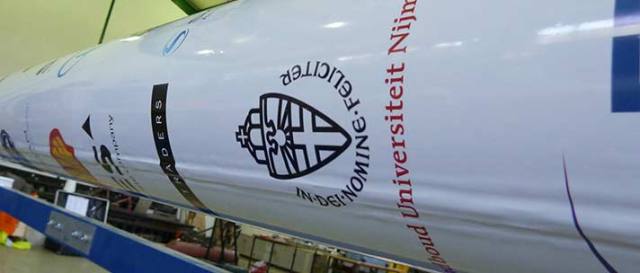Oct 13 2015
Stratos II+, a rocket built entirely by students of Delft University of Technology, will be launched again on Wednesday October 14. The first attempt in 2014 unfortunately failed due to technical problems.
 Stratos 3K
Stratos 3K
The rocket will hold an antenna to intercept radio signals below 30 MegaHertz and a digital receiver, both developed by researchers from the Radboud Radio lab at Radboud University.
The payload from Nijmegen is part of a preparatory programme for a radio telescope on the moon. Such a telescope would, for the first time, enable researchers to measure radiation generated shortly after the Big Bang. This radiation cannot be measured by radio telescopes on Earth because we produce a lot of it ourselves at the same frequencies, and because our atmosphere absorbs it.
Testing in a space-like environment
Building a radio telescope on the moon involves special requirements regarding the weight, dimensions, power consumption, as well as the processing and transfer of data. ‘That’s why the experiment aboard the Stratos II+ rocket is such an important initial step’, says Marc Klein Wolt, astronomer and director of the Radboud Radio Lab. ‘It is an important exercise for our team and it gives us the unique opportunity to test the digital receiver we developed in a space-like environment.’ Demonstrating the technology
The primary goal of the current experiment is to demonstrate the functionality of the technology. The rocket will be loaded with equipment for power supply and with equipment to record and analyse the data produced by the antenna. If all the equipment survives this test, it might be used in a professional space mission in time.
The Radboud Radio Lab team will also use the 50 centimetre antenna to measure the radio-frequency interference (RFI) in the atmosphere, and how the strength of this signal increases as the rocket climbs to an altitude of 50 kilometres. Using this, the astronomers hope to obtain a clearer understanding of the amount of RFI that can be expected in space.